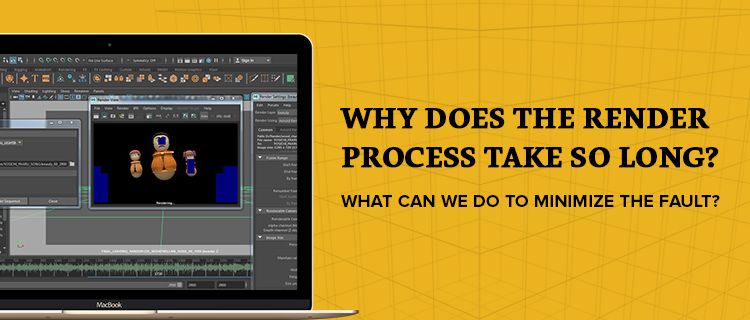In the pipeline from scripting to composition an Animation episode, Rendering play very vital role in the Feel and quality of the outcome. At the same time Rendering the perfect outtakes upto 75% of the time consumption. 3D rendering is the process of creating a 2D image from a 3D scene. The process can be explained as holding a DSLR camera and taking the photo of real world. 3D Video can be defined as collection of sequential images, those were captured by computer in the virtual world in the form of render.
Here in this article we will discuss the aspects why render is the most time consuming process of an animation project and the factor that affects it.
There may be dozens of factors while it comes to the 3D rendering time consumption issue, However basically the prime reason why the rendering is a more time consuming process is because it’s a memory intensive process. Other common factors that affect the progress are low computer specifications and not properly optimized setup for your particular 3D setup.
Prime Factors that affect render timing
i) computer Specs
We may have a more powerful multi core processing computer with memory thousands of time greater, but we have also gradually increased the Image quality that would fit better on larger screens of TV and mobiles.
The Rendering process is done with the assistance of CPU and Sometimes with different numbers of GPUs (Aka Graphic cards). Systems built specially for 3D works tend to provide more quick and better results.
ii) Photorealistic rendering
As the name suggests the output of each frame would match close to real life view and each frame of these types of render would normally take multiple hours to days. And for your calculation each second of an animation video would have 30 frames.
iii) Raytracing
This method is widely used in making real world 3D scenes. Each pixel of the 3D scene would emit light rays that would travel through the camera and generate the render frame. This method is very much memory intensive.
iv) Reflections and Refractions
While discussing memory intensive processes, there is a big bite in the resource that goes to reflections of ray bounce off the surface and how rays go through the surface also known as refraction. Non-optimized reflection and refraction would eat lots of time.
v) Shadows
The two types of shadows in 3D are depth map and ray traced one. While comparing ray tracing shadows, Depth map shadows are much quicker. Although Depth map shadows are lower in quality, Further modification and optimization can lead to delivering good quality.
Including above, Output resolution of each frame and physics engines and particle Dynamics plays an important role in time consumption.
How to optimize and shorter render time?
Geometry
Vertices or Nodes are the prime cause of weightage of the model and make the render process suffer. From the textures to shadows, if the model’s geometry is heavy, your render time is going to take a big bite.
Save time of render by reducing the vertices and deleting the part of the model which is not visible to the camera. Reduce the polygon size from high to low of a model that are away from the camera.
Materials
Texture gives the character a realistic look. But at the same time it adds a good time to render. You can reduce the time by turning off the materials that are away from the camera. And if the objects are far away from the you can use plane texture rather than full polygon. Baking the shadow, light, ambient occlusion are more ways to speed up animations
Lighting
As we know turning off the ray tracing will save time on render. You can decide whether it would require the raytracing, reflection, refraction, ambient, occlusion and ray shadows for the scene. You can bake the shadow of the character in the scene and not going to interact with them.
Similar to the gaming environment, To the low priority object in the scene, it’s better to bake them all together.
Hardware and render settings
The Final recipe to all render to be smooth and fast is hardware and the flawless render setting. A Dual CPU 12 Cores process with 64 GB RAM or higher will be the super hero you will be looking for to minimize render time. When you don’t have option to upgrade your CPU, Then you can look in to GPU render while any system will be supporting multiple GPU and render made with GPUs are faster than CPU renders.
While coming to the render setting, consider does your scene require motion blur or depth of field? It’s always wise to pre plan your particular scene and do the right calculation. There are many render plugins available depending upon your software.
If you require an assistance on the 3D art work and animation, feel free to connect with us. We would be glad to assist you on your hunt to the best animation design company.
